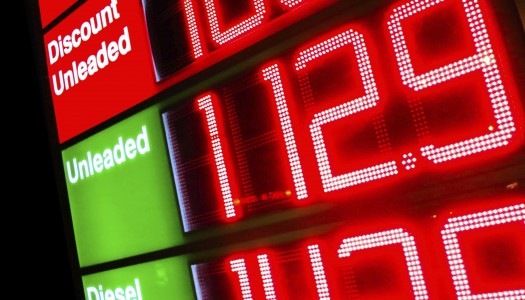Keeping in mind that you don’t outsmart the competition by doing the same, a Shell-branded petrol station in the Netherlands takes competitive advantage of advanced dynamic pricing. In corporation with a Danish data analytics company (a2i Systems) the petrol station sets their prices based on dynamic retail fuel pricing (The Register, 2017).
Open competition between companies selling similar products commonly leads to price wars. The retail fuel industry is a good example of a competition where companies are pushing each other in a bloodbath by dropping petrol prices.
Where older pricing software are originally based on simple rules such as always keeping prices lower than the competition, advances in Artificial Intelligence (AI) allow retail and wholesale firms to move beyond dynamic prices for fast-moving goods. Data analytics company a2i Systems developed pricing software that’s focussed on consumer behaviour by applying AI to Big Data. The system uses mountains of historical and real-time data to identify the optimal price setting throughout the day. By learning when raising prices drove customers away and when it didn’t, the software is able to live up to the price sensitivity of customers (a2i Systems, 2017).
Chief Executive of a2i Systems Ulrik Blichfeldt said that this software is developed to benefit both the customer as well as petrol stations. “This is not a matter of stealing more money from your customer. It’s about making margin on people who don’t care, and giving away margin to people who do care,” he said (The Australian, 2017).
On the other hand, anti-trust laws could be challenged by the rise of AI pricing. Former anti-trust lawyer and now law professor Maurice Stucke said that eventually consumers will be going to end up paying a higher price (The Australian, 2017).
Makers and users of AI pricing state that whatever tools are used, the business logic remains human. What do you think? Will AI pricing help firms in fast-moving goods industries to stay out of the bloodbath or will it make collusion easier and aliens to fair competition?
Bao Pham
415129
References:
A2iSystems, 2017. Pricecast Fuel: retail fuel pricing – management and optimization. Retrieved from http://a2isystems.com/files/pdf/PriceCast%20Fuel%20Product%20Folder%20(’15).compressed.pdf
Orlowski, A. 2017. AI-powered dynamic pricing turns its gaze to the fuel pumps. Retrieved from https://www.theregister.co.uk/2017/05/24/aipowered_dynamic_pricing_petrol/
Schechner, S. 2017. Consumers lose, margins win when robots set the prices. Retrieved from http://www.theaustralian.com.au/business/wall-street-journal/consumers-lose-margins-win-when-robots-set-the-prices/news-story/f6729db857e74963921dfa3d00953ed7


In a way AI pricing is indeed not different than any other pricing intelligence, besides that a computer is carrying it out. I think it will be quite difficult for regulators to go against this pricing mechanism, unless there are actual legal/privacy boundaries that the software crosses.
Interesting article about a strategic move that might be applicable in other highly competitive industries. Especially the comment of Ulrik Blichfeldt I find intriguing as this seems to be in conflict with the execution technology. If the AI would generate optimal prices throughout the day, it means it cannot distinguish between each individual user on a specific time. But the comment of Blichfeldt seems to me more like a personalised or group pricing method that cannot match with individual users on a certain time window. I’m curious to know how this will pay out in the future though.
But to respond to your question, if the AI technology indeed will provide different prices throughout the day, I don’t expect that this will overcome the bloodbath. It is possible that competitors will copy the strategy and eventually force all margins in the industry to go down. End result would be the same price war with lower overall margins. The exercised test will be a good indicator to see if this solution is feasible.